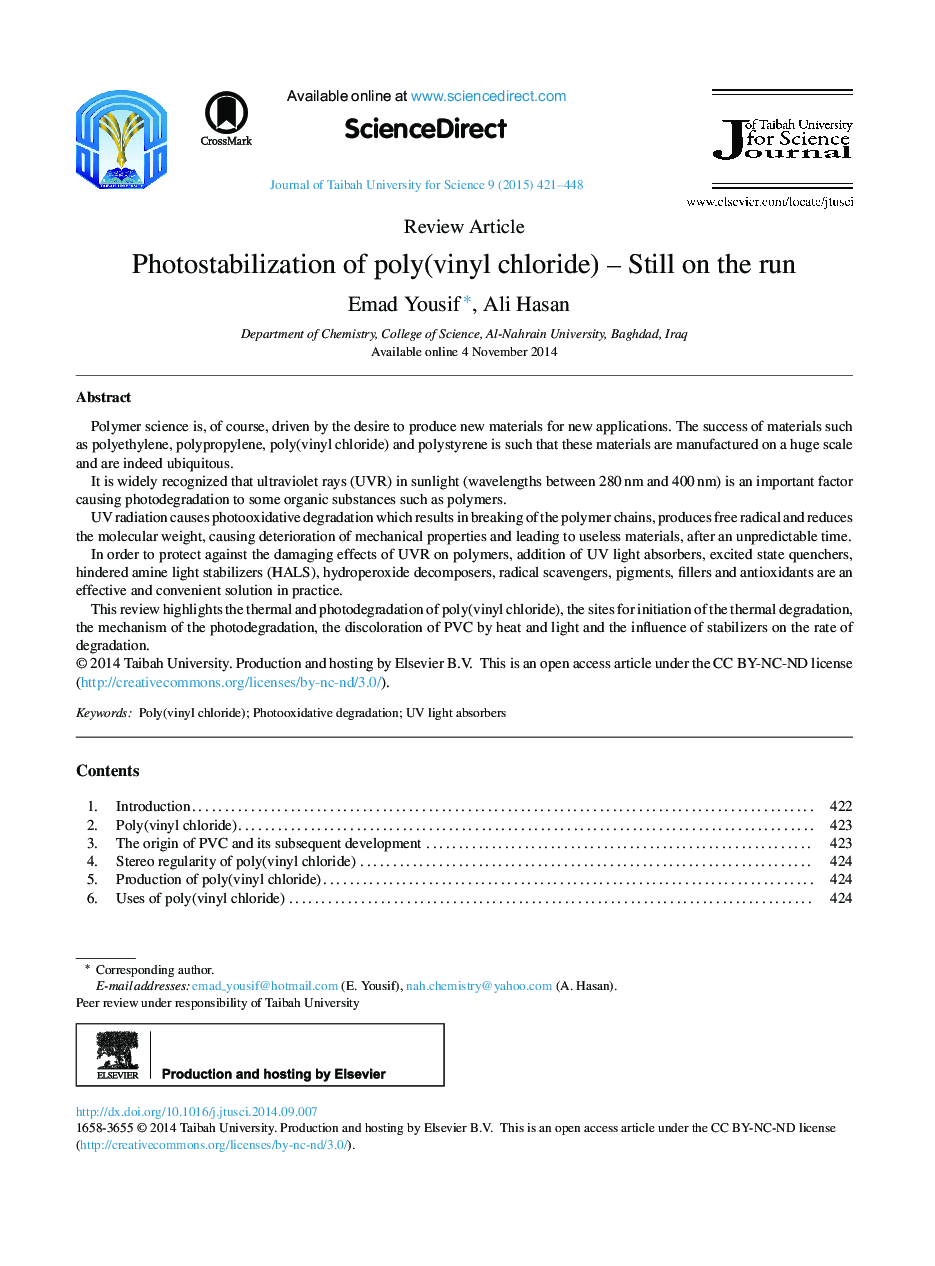| Article ID | Journal | Published Year | Pages | File Type |
|---|---|---|---|---|
| 1260732 | Journal of Taibah University for Science | 2015 | 28 Pages |
Polymer science is, of course, driven by the desire to produce new materials for new applications. The success of materials such as polyethylene, polypropylene, poly(vinyl chloride) and polystyrene is such that these materials are manufactured on a huge scale and are indeed ubiquitous.It is widely recognized that ultraviolet rays (UVR) in sunlight (wavelengths between 280 nm and 400 nm) is an important factor causing photodegradation to some organic substances such as polymers.UV radiation causes photooxidative degradation which results in breaking of the polymer chains, produces free radical and reduces the molecular weight, causing deterioration of mechanical properties and leading to useless materials, after an unpredictable time.In order to protect against the damaging effects of UVR on polymers, addition of UV light absorbers, excited state quenchers, hindered amine light stabilizers (HALS), hydroperoxide decomposers, radical scavengers, pigments, fillers and antioxidants are an effective and convenient solution in practice.This review highlights the thermal and photodegradation of poly(vinyl chloride), the sites for initiation of the thermal degradation, the mechanism of the photodegradation, the discoloration of PVC by heat and light and the influence of stabilizers on the rate of degradation.
